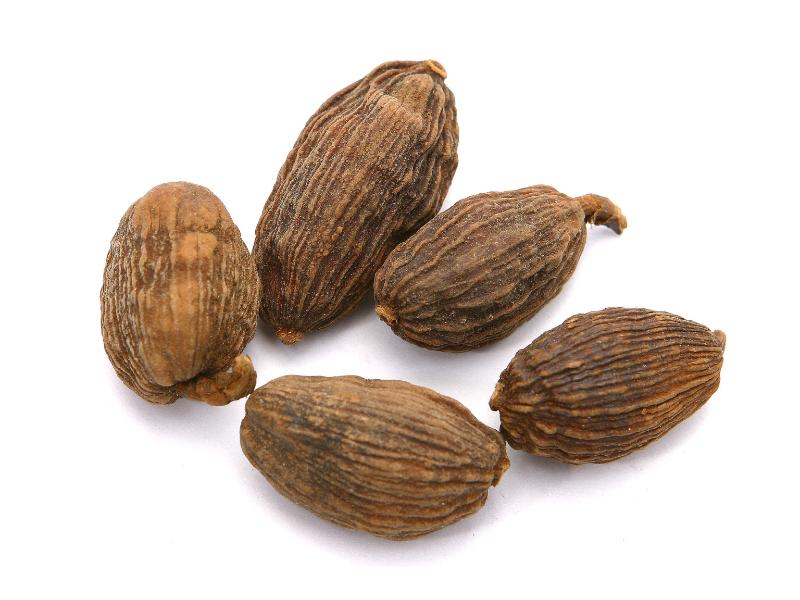Search in medicinals
Tsaoko Fructus
Tsaoko [fruit]
草果 〔草果〕 cǎo guǒ

Alternate Chinese names: 草果子 cǎo guǒ zǐ; 草果仁 cǎo guǒ rén
Kingdom: Plant
Origin in PRC Pharmacopoeia: Amomum tsao-ko Crevost et Lemaire. (PRC Pharmacopoeia)
Origin in unofficial sources: Amomum tsao-ko Crevost et Lemaire
Use: Medicinal
Category:
Properties: Acrid; warm.
Channel entry: Spleen and stomach channels.
Actions and indications:
- Dries dampness and warms the center: Cold-damp obstructing the center with distension and pain in the stomach duct and abdomen,
vomiting and diarrhea , and turbid slimy tongue fur. - Eliminates dampness and interrupts malaria: malarial disease.
- Additional uses: cǎo guǒ disperses food and treats food accumulation.
Dosage and method: Oral: 3–6g in decoctions; discard the shells and crush the seeds before use.
Warnings: cǎo guǒ can damage liquids because it is warm and dry; it is contraindicated in
Product description: This fruit is oval in shape, 2–4 cm long, 1–2.5 cm in diameter, with three longitudinal ridges. It has a protrusion at the time, and the remains of the stalk at the base. The husk, grayish-brown in color, is supple, and easily breaks open longitudinally to reveal three seed chambers, each containing 8–11 brown seeds, each with four or more faces, compressed tightly together. The seeds are hard and reveal their white interior and powerful aroma when crushed. This fruit is similar in form to Bái dòu kòu (白豆蔻 Amomi Fructus Rotundus, cardamom).
Quality: Large plump fruits that are reddish brown on the surface are best.
Production area: Guǎngdōng.
Etymology: The name cǎo guǒ 草果 literally means grass fruit.
The English name tsaoko,
from the botanical name Amomum tsaoko derives directly from the Chinese.
See: Bái dòu kòu (白豆蔻 Amomi Fructus Rotundus, cardamom)
Back to search result Previous Next